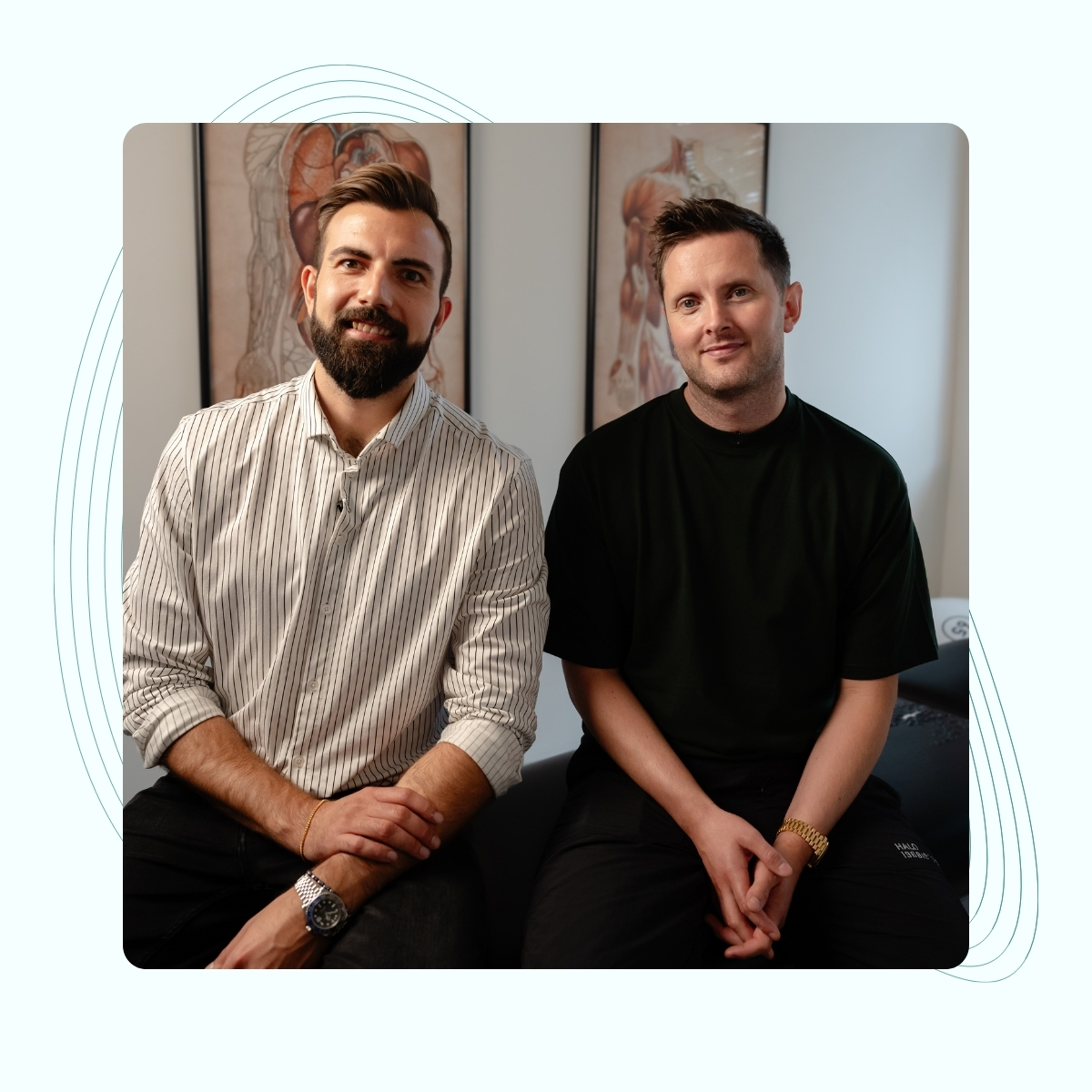We treat
Lower back pain
Learn more about lower back pain & its complications
Lower back pain
Throughout life, most people will experience symptoms from the lower back at some point. One in 3 (about 30% of the population) experiences pain or discomfort from the lower back for more than a year. Therefore, it can be assumed that lower back pain and discomfort are a common disease. Between the sexes, women are the most affected and lower back pain usually begins in the teenage years.
Lower back pain? Book an appointment today
Jump to section [Show]
Symptoms of lower back pain
Lower back pain can manifest itself in different forms and intensities. The pain can be pressing, throbbing, cutting, burning, etc. However, there are certain characteristic features that characterize lower back pain;
-
- Severe pain and possibly fatigue in the lower back, especially when the body has been inactive. – This may be a vascular problem (the blood system).
-
- Stiffness in the lower back in the morning, which gets better as you get started with the day. – This may be a vascular problem (the blood system).
-
- Sharp pain in the lower back, especially during activity. – Most often, this pain is due to muscle dysfunction.
-
- Lower back pain when jumping or lifting. – This form often has to do with the facet joints, the lumbar disc, or the kidneys.
-
- Initial stiffness in the lower back. – This can be due to vascular problems, disc problems in the lower back, and dysfunction in connective tissue and ligaments in the lumbar region.
-
- Acute lower back pain – This often originates from misalignment of the vertebrae in the lower back or if the back is in danger of suffering a major injury.
-
- Pain in the lower back that radiates into the groin, buttock or leg. This is due to the impact of the spinal nerves in the region, including the ilioinguinal, iliohypogastric, genitofemoral, femoral, obturator, sciatic, and pudendal plexuses (the lumbar nerve plexus).

Low back pain and organs
Low back pain can be caused by a problem with an organ or the movement of an organ. The body’s organs communicate with the brain via our autonomic nervous system.
The organs in the pelvis, parts of the abdomen, and the kidneys communicate with the upper lumbar vertebrae.
The kidneys can also affect the lower back mechanically as they lie glued upwards to the quadratus lumborum back muscle and the psoas muscle.
The kidneys must move up and down with breathing, scar tissue and other adhesions can impair the mobility of the kidneys. The organs in the pelvis, including the bladder, uterus (women), ovaries and rectum, are also suspended by connective tissue that has attachments to the lower lumbar vertebrae.
Scar tissue and other factors that tighten this connective tissue can cause mechanical stress on the lower lumbar vertebrae.
Different types of lower back pain
These types are divided into which structures has been influenced.
Nerve root involvement in the lower back
- Herniated disc – the rupture of the fluid in the cushion (disc) between the vertebrae causes inflammation and pain in the back.
- Spinal stenosis – Narrowing of the spinal cord, causing irritation, pain, and neurological symptoms.
- Spondylolisthesis – Forward slippage of one vertebra in relation to the vertebra below. This causes mechanical problems in the lower back and pain when moving the lower back.
- Facet joint syndrome – Locking with irritation of the joints between two vertebrae.
- Osteoarthritis of the lower back – Wear and tear and erosion affect the mobility and strength of the lumbar joints themselves.
- Bone spurs / osteophytes – Bone growths which often irritate the spinal nerves.
- Modic changes – Bacteria that deposit in the back and create invasive breakdown of the tissue in the back and chronic inflammation.
- Circulatory effects in the lower back – Venous bulging of the blood vessels, which creates a poor physiological environment in and around the back with degeneration of all tissues in the back.
- Osteoporosis collapse in the lumbar spine

Pain in the lower back and other parts of the body
The lower back, like any other part of the body, is interconnected to other regions of the body. This connection is through the nervous system, the blood system, the hormonal system, the craniosacral system and the musculoskeletal system.
The nervous system and the lower back
The body’s autonomic nervous system originates from the brain and various parts of the spine. The vagus nerve supplies the kidneys and intestines, which are located in the lower back. The phrenic nerve supplies the diaphragm (the breathing muscle) which is attached to the upper lumbar vertebrae. The phrenic nerve also supplies the peritoneum, which is also found in the lower back.
The circulatory system and the lower back
The kidneys play an important role in the circulatory system. The kidneys regulate blood pressure, filter the blood, and are important for fluid balance in the body. The kidneys also drain blood from the pelvis and lower back.
The hormonal system and the lower back
The kidneys, parts of the intestinal system and the ovaries are all endocrine glands, meaning they are involved in the production of hormones. These hormones communicate with the lower back through the autonomic nervous system.
Cranio Sacral system and the lower back
The craniosacral system is the system that connects the skull to the sacrum (pelvis). All structures in the spine are related to the cranial system. The meninges are the most important structures that can affect the thoracic spine, neck, etc. if there is a problem in the lower back.
Lower back pain – dangerous signs
The lower back, like other regions of the body, can be affected by problems that we need to keep an eye on.
Your doctor should be contacted if the following symptoms occur:
- Back pain that is so intense that you can’t find a position or movement that relieves it. – This could be a kidney stone.
- General symptoms that do not get better or different at any time of the day. – Suspected cancer of the spine.
- Cancer – local pain in the lower back that gets worse over time, sciatica pain that gradually gets worse, loss of appetite, unexplained weight loss, constant symptoms of illness.
- Urinary incontinence or sensory and motor disturbances in both legs – Suspicion of central disc herniation.
- Sudden, acute and unexplained pain locally in the lower back provoked by weight-bearing (women and men over 50 years of age). – Suspicion of collapse of the lumbar vertebrae (osteoporosis – brittle bones).
- Stiffness in the back that gradually stiffens the entire spine and neck. – Suspected meningitis.

Good advice for lower back pain
Lower back pain is frequent. Low back pain can occur acutely, for example, when lifting incorrectly, when working in a sedentary position, during sports activities or at rest. Below you can learn how to either avoid low back pain, eliminate low back pain or prevent the pain from getting worse.
Eliminate and reduce lower back pain
- Keep your body active, 3-4 times a week for 30 minutes at a time – Physical activity improves and strengthens the body’s circulation so that the lumbar vertebrae and discs remain healthy. Physical activity normalizes the acid-base level in the body.
- Prioritize your sleep and the quality of your sleep – The joint and disc are nourished and strengthened at night. At night, fluid diffuses into the disc so the disc is thicker in the morning. The human being is approx. 2-3 cm taller in the morning and lower in the afternoon and evening.
- Avoid sedentary work as much as possible – Office work should be varied by sitting and standing, with short breaks being prioritized where the body is active. This strengthens the body’s circulation.
- Strengthen the muscles, tendons and joints in the body with strength training – Strength training promotes blood flow in the back, increases bone density and strengthens joints and ligaments.
- Healthy diet – Diet is the foundation for joints, muscles and connective tissue to remain strong or become stronger.
- Reduce stress – Stress increases physiological inflammation in the body which helps to break down and weaken the back.
Low back pain or pelvic and hip pain?
Origin of pain can be difficult to localize and find out whether it comes from the lower back, pelvis or hip. These areas are almost indistinguishable from each other as they function mechanically and neurologically as a unit. Below you can get an overview of where the problem comes from.
- Pain in the spine and flank that is present at rest – This may be called low back pain
- Pain in the spine and flank that occurs during movement, especially movement out to the extreme position – May be combined with lower back pain with problems from the pelvis and hip.
- Pain below the “dimples” or below the pelvic rim – This is called pelvic and hip pain.
- Pain or problems in the legs on the front and inner side of the thigh that are present at rest – This can be categorized as a low back problem.
- Pain or problems in the legs on the front and inside of the thigh that occur during activity – Most often a problem from the pelvis and hip.
- Pain or problems in the legs at the back of the thigh or in the lower leg that are present at rest – This can be categorized as a problem originating from the pelvis or the nerves that come from the pelvis.
- Pain or problems in the legs at the back of the thigh or in the lower leg that occur during activity – Most often a problem from the pelvis and hip or the nerves that come from the pelvis.

Osteopathic approach to low back pain
At Osteonordic we always look for the causes of lower back pain.
As previously mentioned, the pain can be located in all body systems. Since the physiotherapists and osteopaths at Osteonordic are specially trained to find and eliminate these causes in all systems, which no other professional groups have the competence for, we are better placed to help with difficult lower back problems.
We are therefore experts in examining, diagnosing and treating various injuries and problems in the lower back, such as herniated discs, sciatica, spinal stenosis, spondylolisthesis, osteoarthritis, etc.
Ischiogluteal bursitis
Between the ischium, the gluteus maximus muscle and the hamstrings there is a sac of mucus that helps to reduce friction. The sac can become irritated and inflammation can occur.
Causes of ischiogluteal bursitis
The most common cause is sitting for a long time, for example when cycling with a hard saddle, or a hard office chair.
Symptoms of ischiogluteal bursitis
The symptoms are pain around the ischial tuberosity when sitting. The pain disappears as soon as you stand up again.
Treatment of ischiogluteal bursitis
The treatment primarily consists of relieving the pressure from the hard surfaces that may have provoked the irritation.

Often related injuries
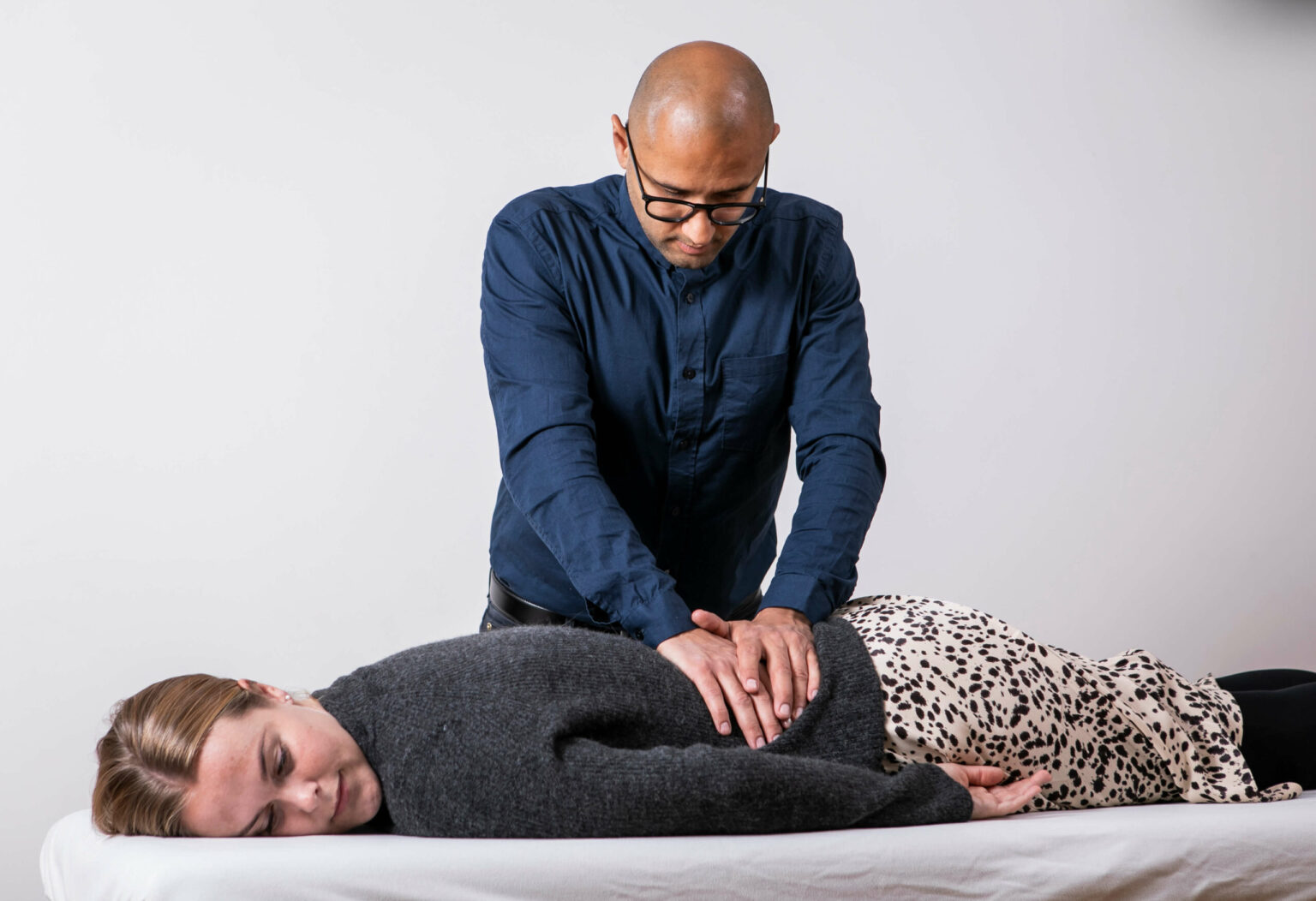
Spinal stenosis
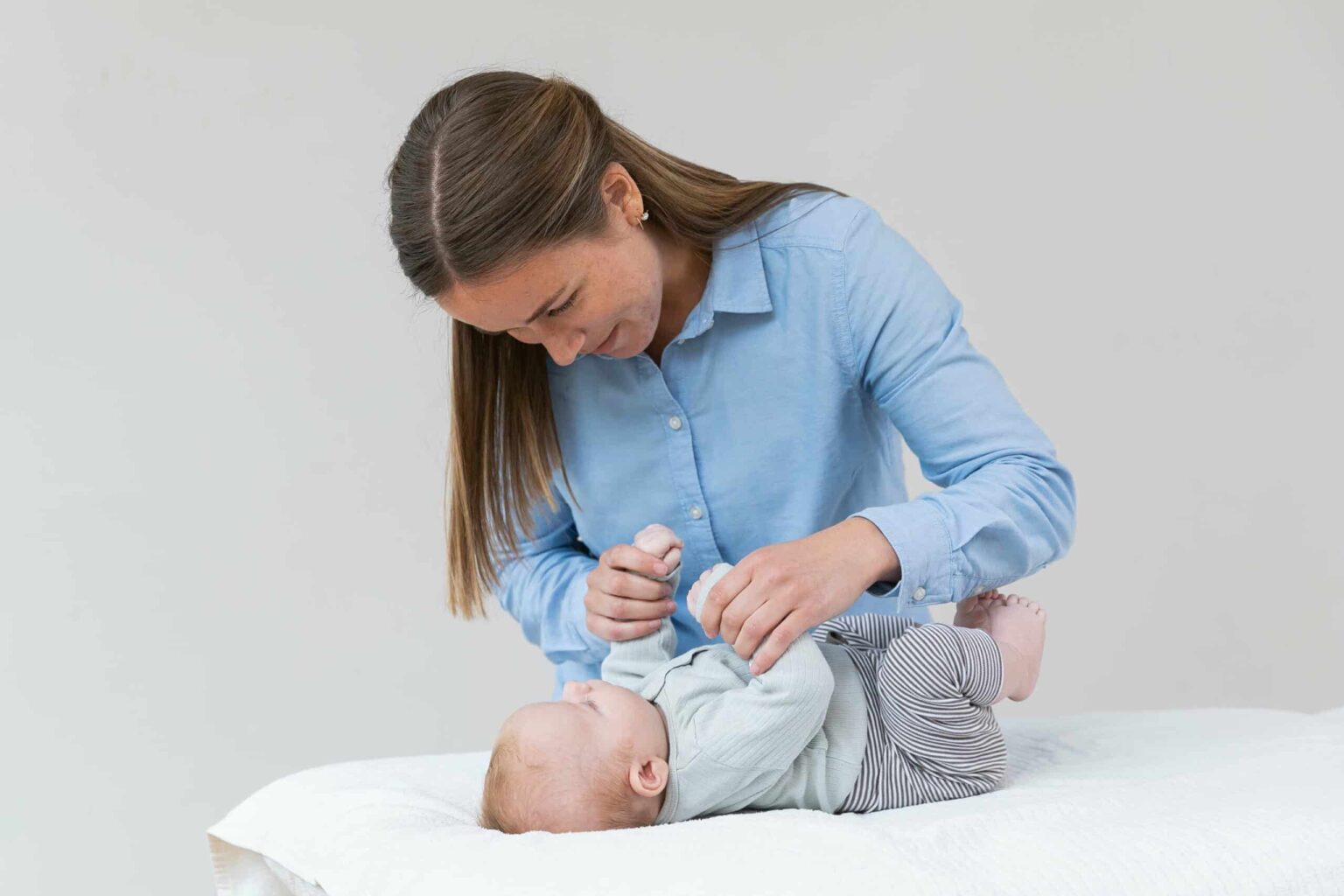
Hypermobility in babies and children
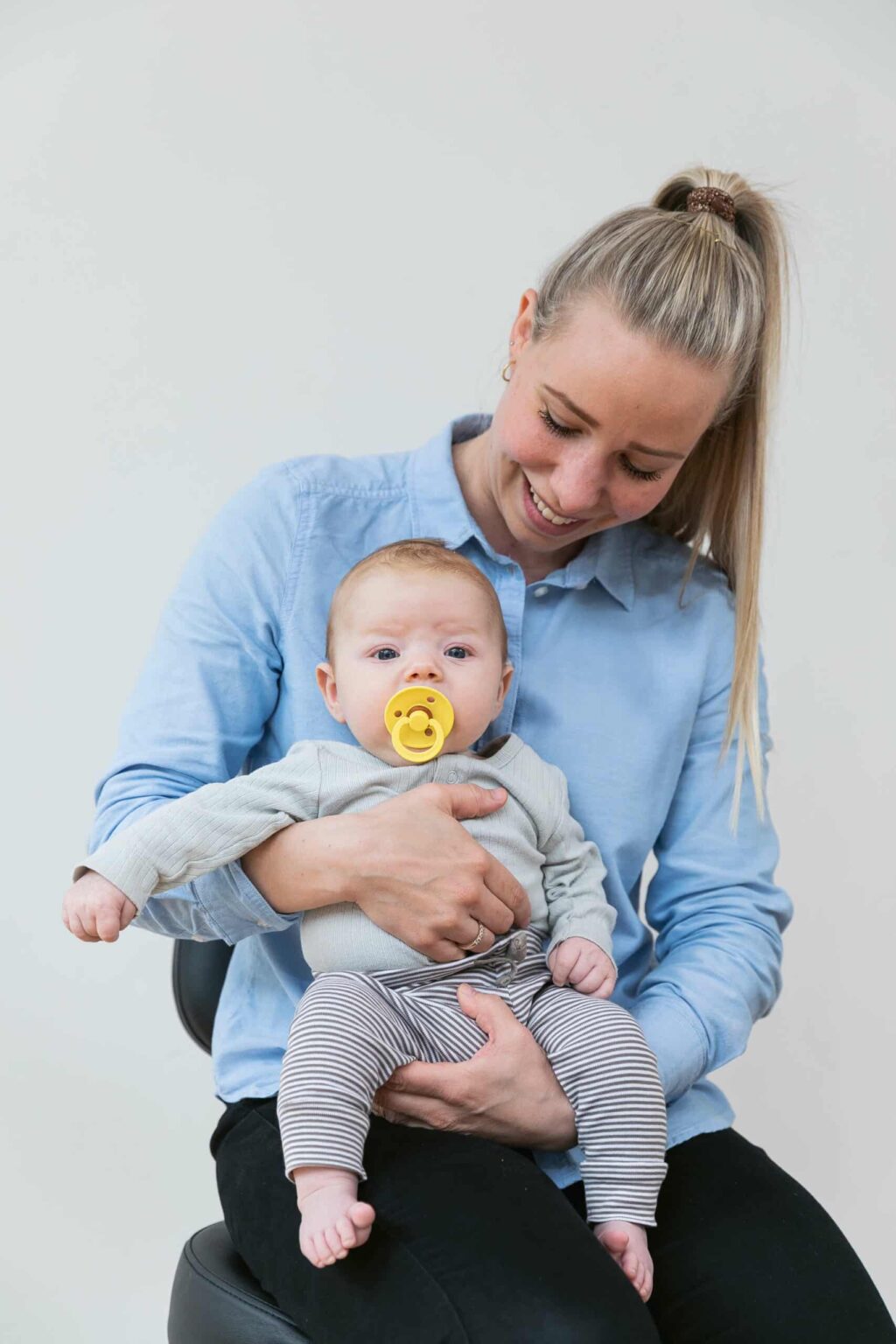
Muscle tension or imbalances in babies and children
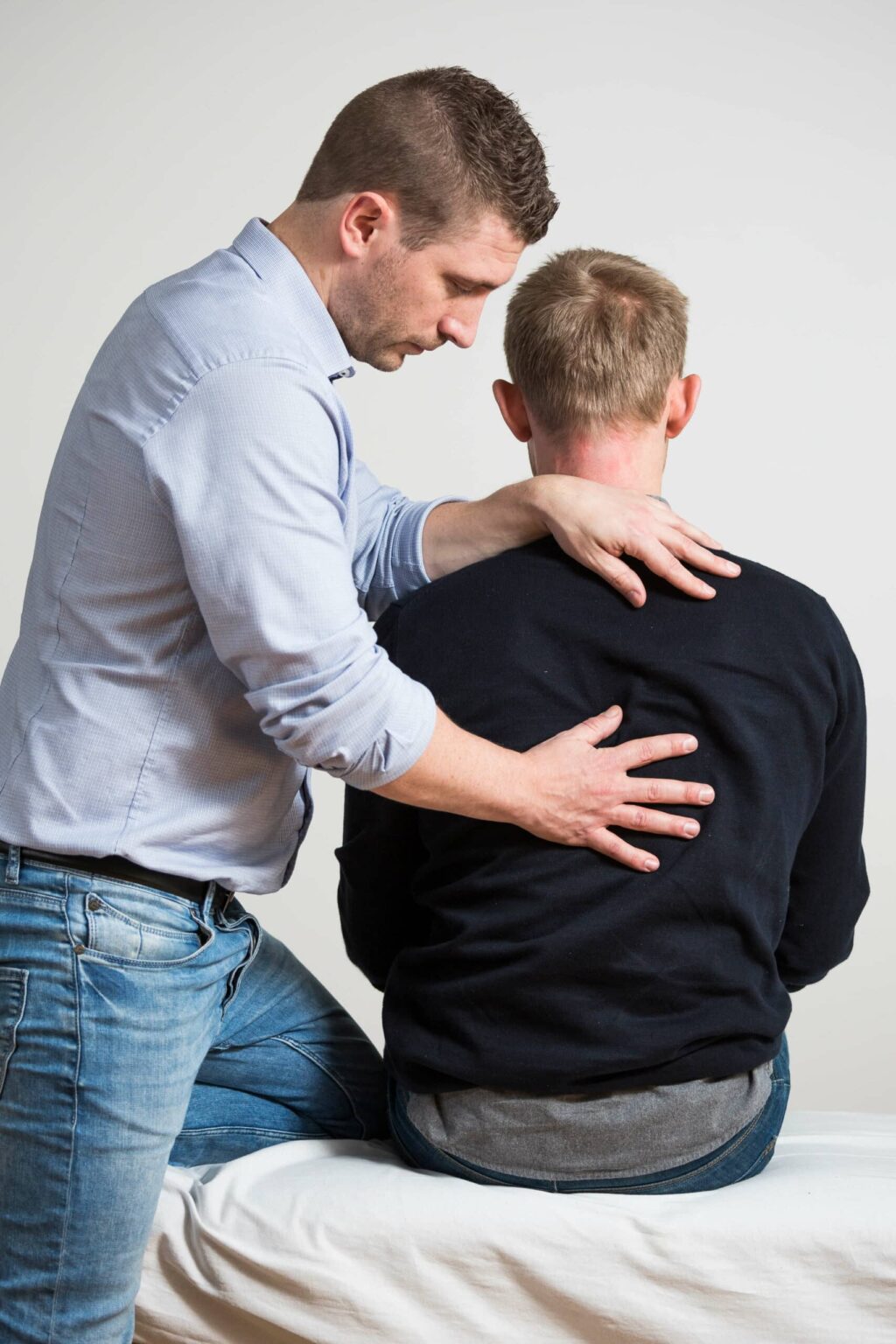
Modic Changes
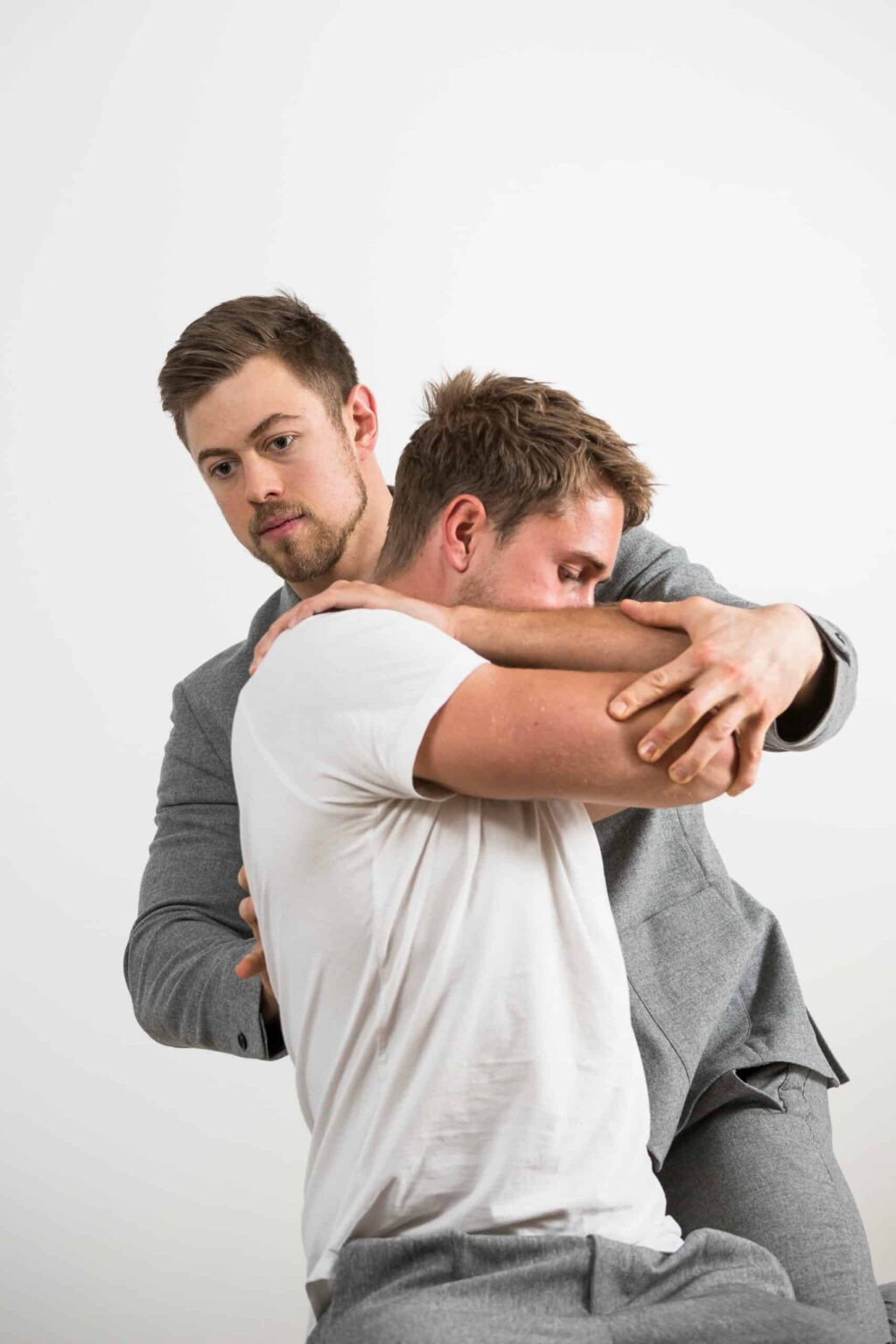
Disc herniation
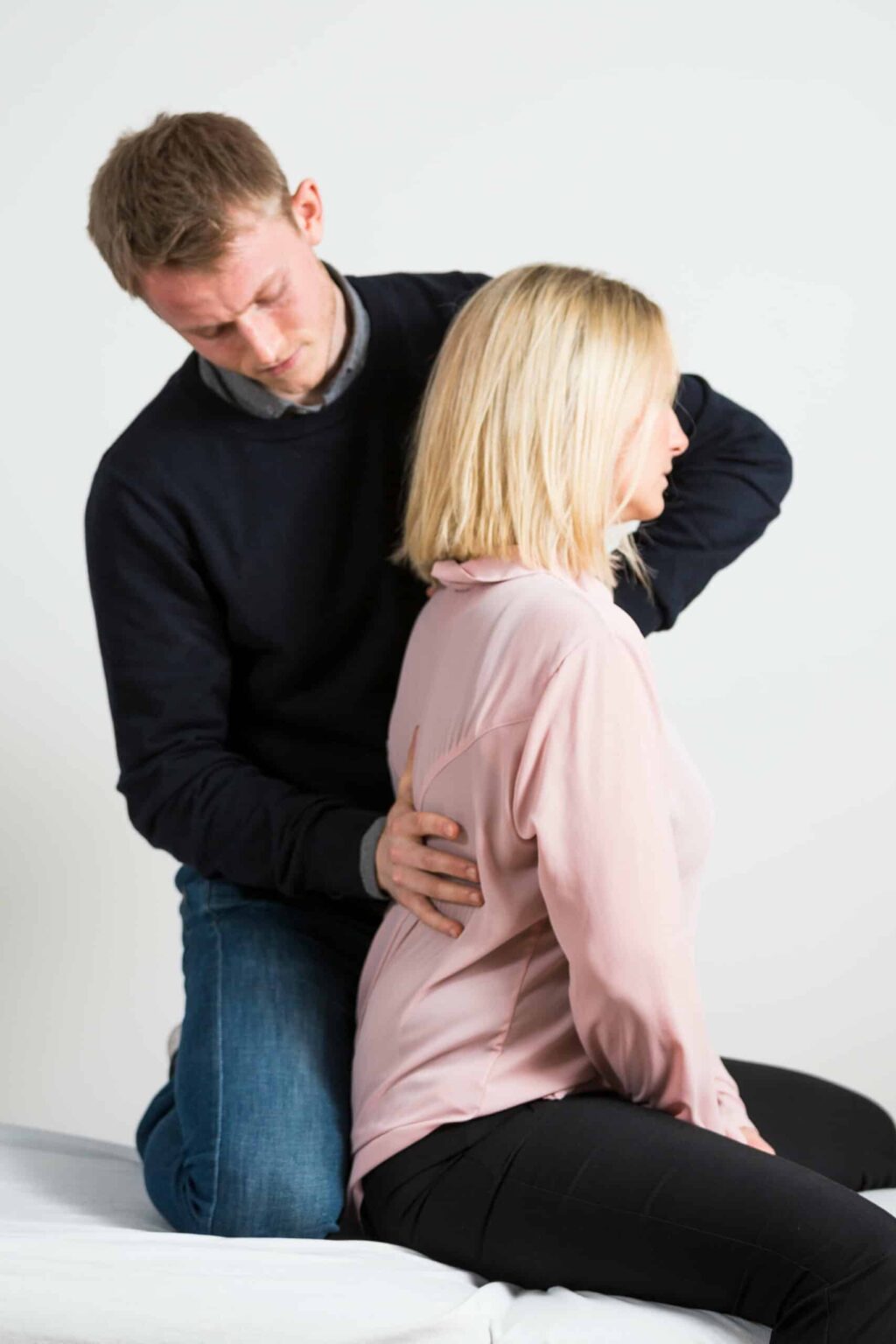
Spinal arthritis
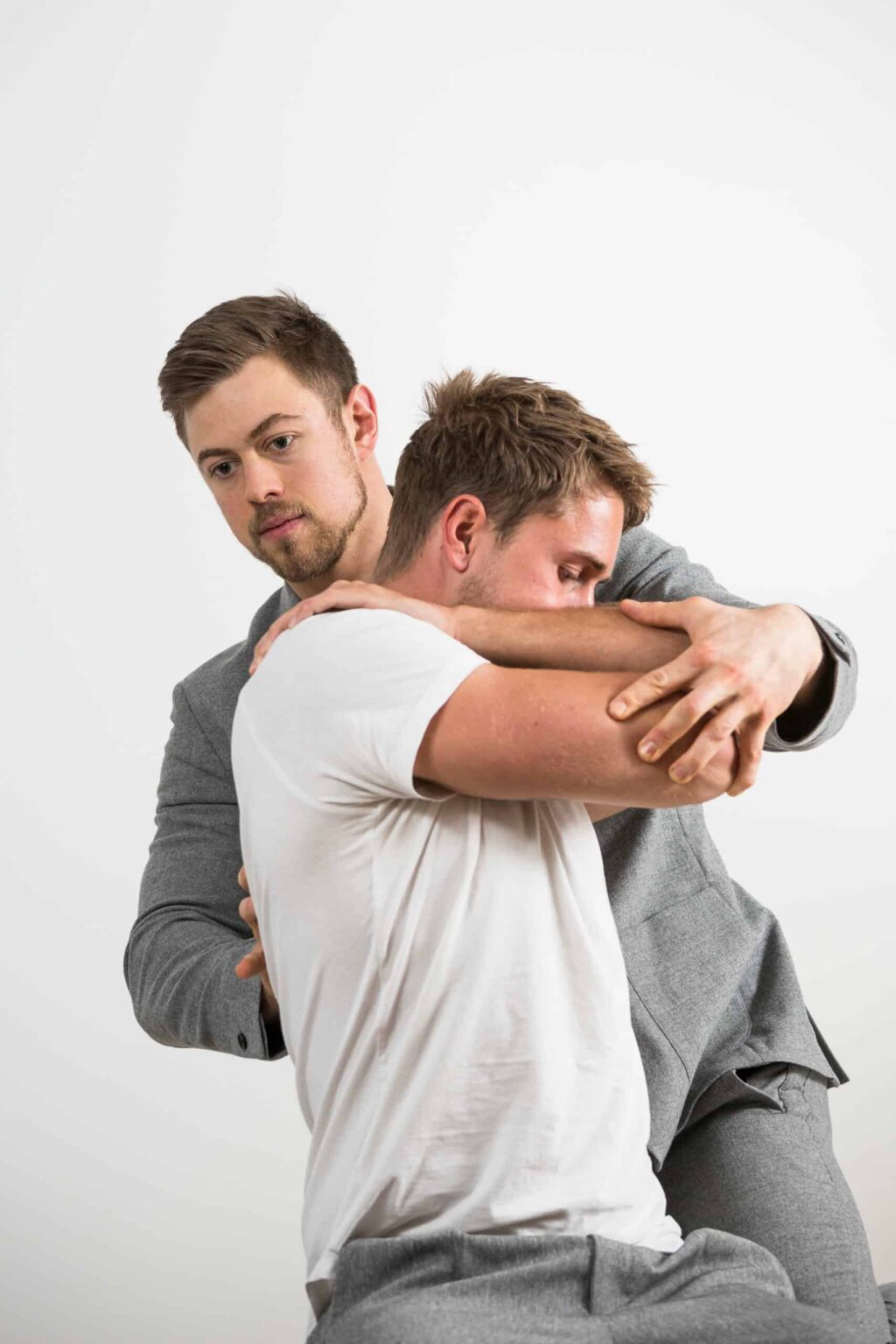
Winged scapula

